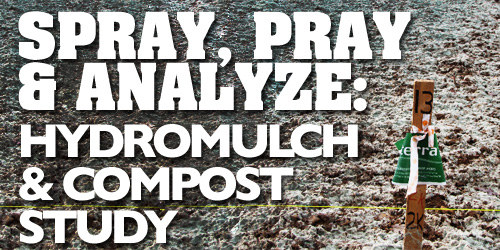20 Aug HYDROMULCH & COMPOST STUDY REVISITED
We are considering doing even more ‘application and performance’ studies and demonstrations at the Shasta College Erosion Control Training Facility In the near future.

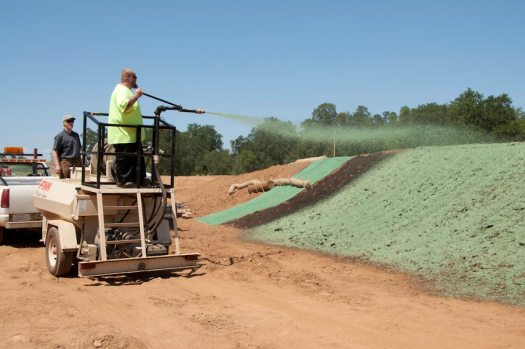
Here are some photos from the Hydromulch-compost study from 2009/2010.
In the study we looked at the accuracy in the anecdotal theory that “high rates of BFM (4000#/ac) would reduce seed germination and grass establishment.” We constructed approximately 20 plots that has uniform soil prep (trackwalking), broadcast mychorrizae uniformly, then manually applied the CA native seed blend to the soil surface at a rate of 20#/ac. The seed was then covered with several kinds of commonly used hydromulches – Soil Guard, Flexterra, TeraMulch, hydrostraw, and a cotton mulch. The study is available for free download by scrolling down to NAVIGATION and clicking on WYD Files.

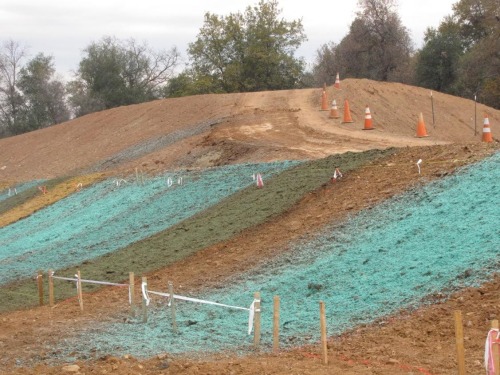
The plots were visually monitored for photodocumented for density of plant establishment during that first Winter, Summer, and the following Fall seasons. We documented NO discernible ill effects from higher rates. Actually just the opposite!!! was true.
That particular winter had unusually intense storms and the lower rates of hydromulch resulted in quite a bit more erosion – there were small deltas of fine sediment observed at the bottom of the 2000#/ac plots, irregardless of mulch brand. Subsequently we observed less vigorous and dense establihment on those 2000#/ac plots.
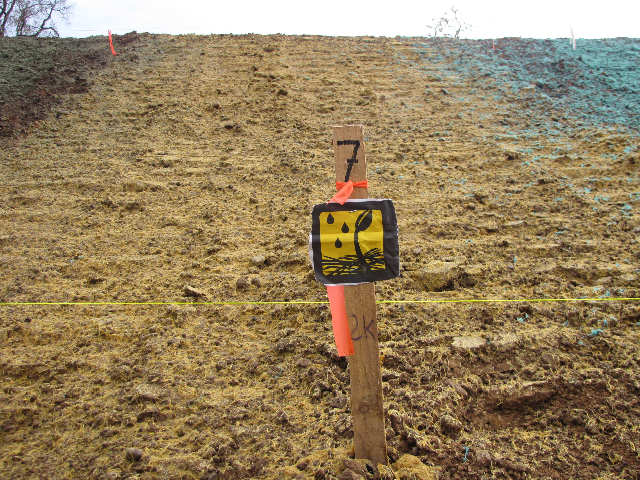

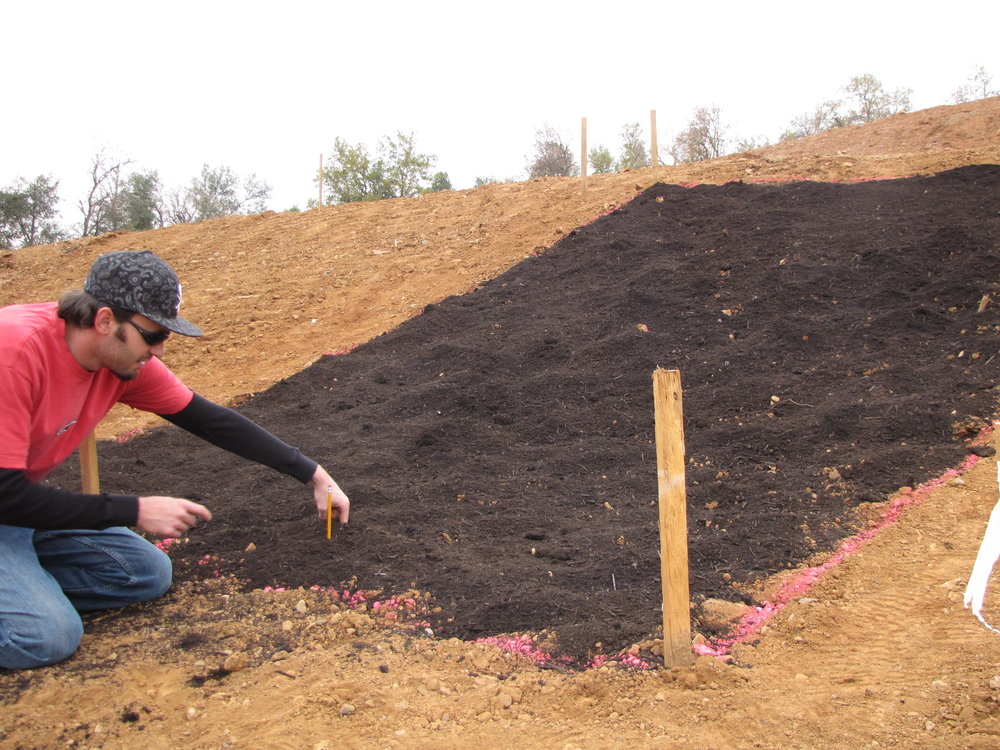
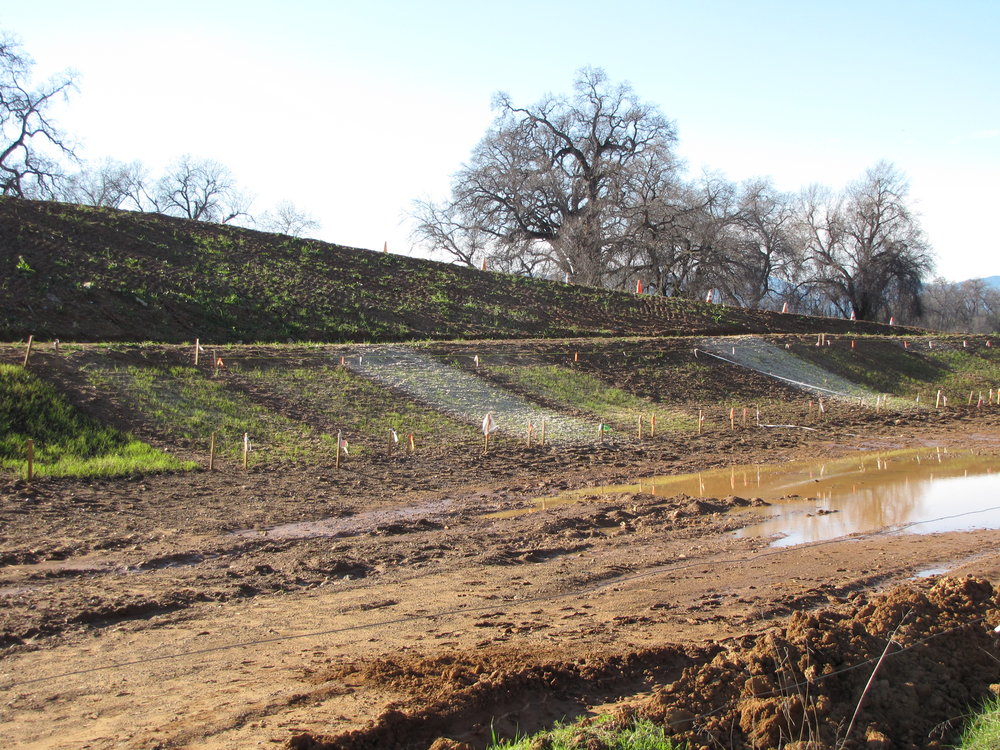
Note the compost plot on the left, this is just two months after application.
What is most significant is that we also applied a compost blanket 2″ thick. There was NO reduction of seed establishment, if fact the compost blanket grew the BEST grass, both by covering seed with 2″ of compost and by gently raking the seed into the surface – there was no dicernable difference.
Hope you enjoy and hope this paper somewhat “lays to rest” the notions that Compost Blankets at 2″-thick and BFM at 4000#/ac will smother seeds. We must, as EC Specialists, find a balance between veg establishment and effective erosion control during the establishment period.
Another observation made at this trial was that weeds did not become established on the plots, even though weeds grew almost everywhere else! My personal hunch is that adding mychorrizae made the difference. My theory is that California native, mychorrizal-dependant grasses and mychorrizae will “out compete” many of the commom noxious weeds. This could be another comparative study!! Native grass establishment with and without mychorrizae.
Another potential study will be to do side-by-side comparisons of compost and the “new” biotic soil formulated hydromulches. These hydromulches could prove to be cost-effective over compost. Let’s try it!!

